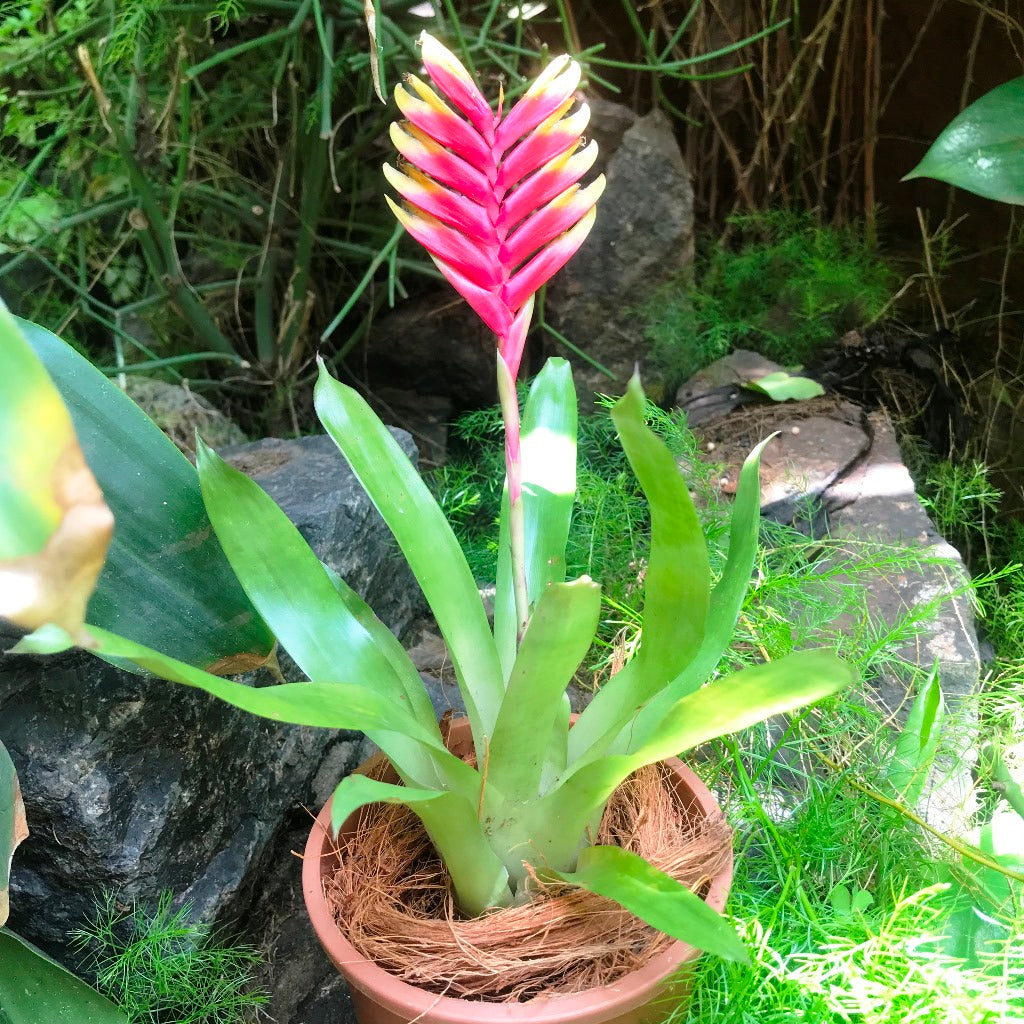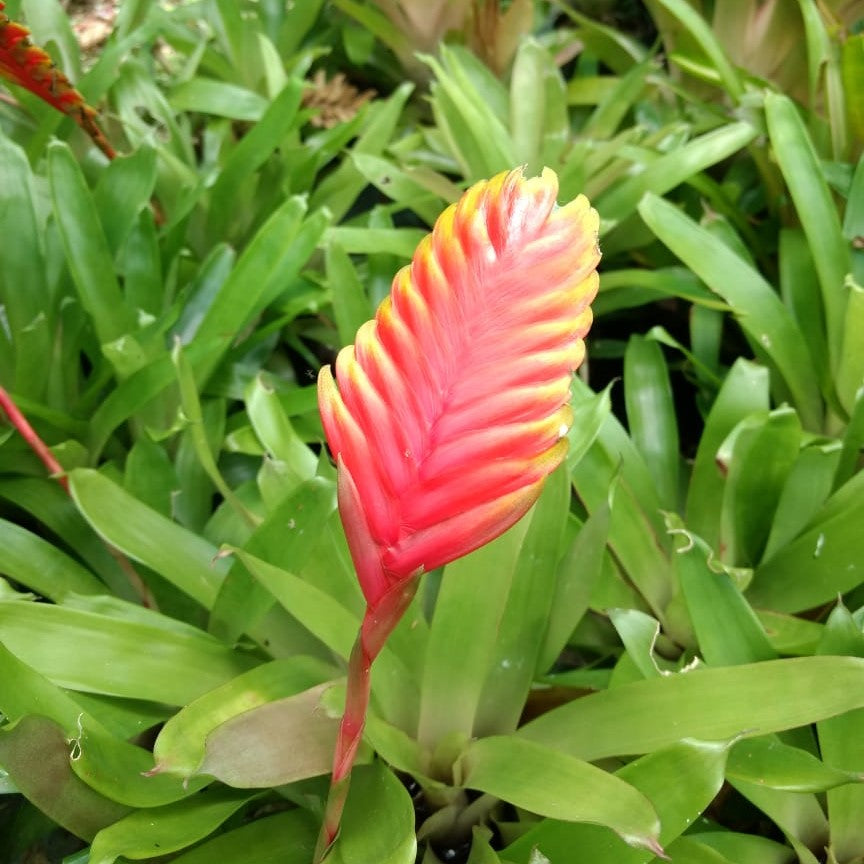Flaming Sword Plant
Family
Bromeliaceae
Origin
Guyana & Venezuela
Description
Vriesea Carinata, commonly called flaming sword, is a bromeliad with generally lance-shaped or linear foliage 8 – 24 inches long that is green or purplish often with crossbands of dark brown. The leaves have smooth margins and may have colorful bracts at the leaf bases. The foliage is often arching, forming a funnel-shaped rosette.
The red rosette of Vriesea carinata produces a flower stalk in a lobster-claw form, with red bracts ending in yellow tips. While the leaf rosette is only 8 inches tall and equally wide, the colorful flower stalk rises to 12 inches tall, making it a bright addition to a small space.
Environment
Caring for Vrieseas is not difficult, they only require the center vase to be watered and not the soil. In fact, in their natural habitat they do not need soil and will grow on trees. The roots are very small on this plant compared to most house plants and do not take water and nutrients from the root system.
Vrieseas are very adaptable to a wide range of light. They will thrive in shaded areas as well as areas with bright indirect sunlight. Vrieseas are more tolerant of dense shade than other common bromeliads. The more sunlight a Vriesea receives, the more humidity it will need to avoid scorching the leaves. Vriesea foliage will also become more brilliant in color when exposed to more light. Moderate temperatures are preferred by Vrieseas.
Like many bromeliads, Vrieseas are primarily epiphytic so they take in water and nutrients through the central tank. They are easily susceptible to crown rot. If the potting medium they are planted in remains soggy or moist, the roots will rot and ultimately destroy the plant. It is important to make sure the tank of the Vriesea remains wet, but not the potting medium. It is also necessary to flush the tank with fresh water weekly. This will prevent build up on the leaves and will also prevent insect development and stagnation. Using rainwater or distilled water to fill the tank will prevent a saline build up on the leaves. One can also provide humidity by misting the entire plant with a spray bottle.
Vrieseas can be fertilized using a slightly acidic fertilizer diluted to a quarter of the recommended strength. During the growing season, thoroughly coat the all surfaces of the foliage with the diluted solution at least twice a month.
Like other bromeliads, Vrieseas produce only one flower during its life cycle. Once the plant is finished flowering it will produce offspring called pups. These pups are exact replicas of the mother plant and can be removed and repotted once they reach half the size of the original plant. Because pups are usually top heavy it may be necessary to stake the plant until mature roots have formed to anchor the plant in the potting medium
Landscape Uses
Suitable for Container, Rock Garden & Xeriscaping






















